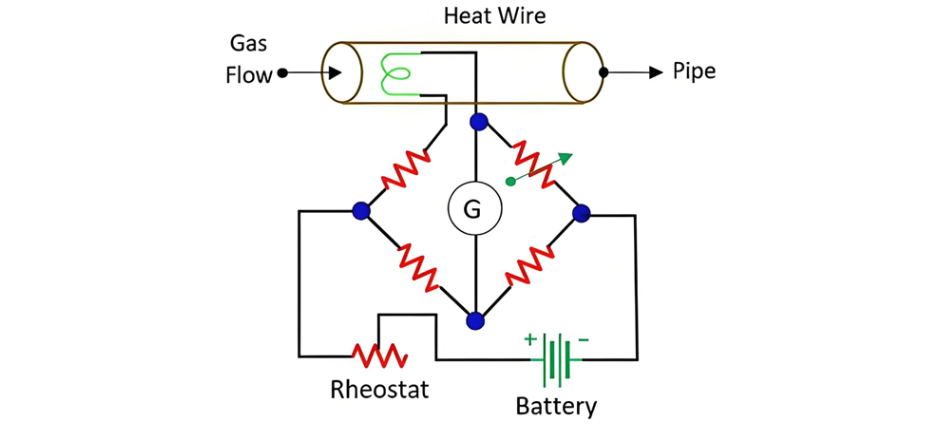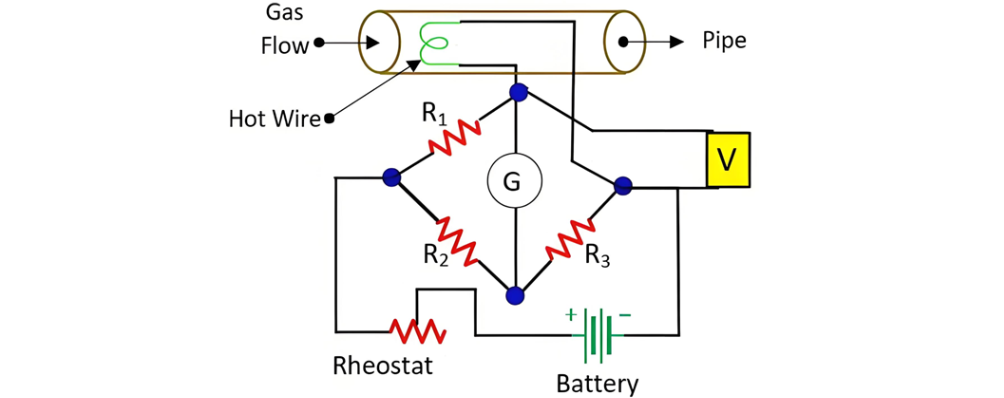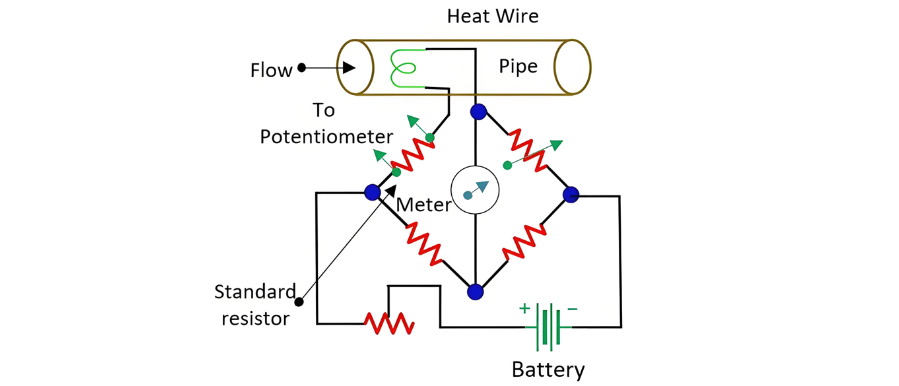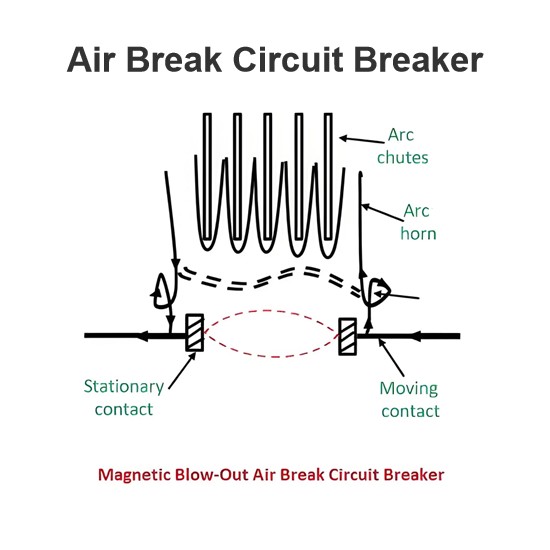Definition
A Hot Wire Anemometer is a device used to measure the velocity and direction of a fluid flow by quantifying the heat loss from a heated wire exposed to the fluid stream. The wire is heated via an electric current, and its temperature change—caused by heat transfer to the fluid—serves as an indicator of flow characteristics.
When the heated wire is placed in the fluid stream, heat is convected from the wire to the fluid, causing the wire’s temperature to drop. The change in the wire’s electrical resistance (due to temperature variation) is directly related to the fluid’s flow rate, allowing for velocity measurement.
Rooted in the principle of heat transfer from a high-temperature object to a lower-temperature fluid, the hot wire anemometer is widely used as a research tool in fluid mechanics to study complex flow dynamics.
Construction
A hot wire anemometer comprises two primary components:
- Conducting Wire
- A fine, resistive wire (e.g., platinum, tungsten) housed within a ceramic or metallic probe.
- The wire is exposed to the fluid stream, where it acts as both a heater and a temperature sensor.
- Leads from the wire extend from the probe to connect to the measurement circuitry.
- Wheatstone Bridge Circuit
- A precision electrical circuit used to measure minute changes in the wire’s resistance.
- The bridge is calibrated to detect resistance variations caused by heat loss to the fluid, translating these into flow velocity readings.
Operation: Constant Current Method
- Setup: The anemometer probe is positioned in the fluid stream whose velocity needs to be measured.
- Heating the Wire: A constant electric current is passed through the conducting wire, heating it to a temperature higher than the fluid.
- Heat Transfer: As the fluid flows over the wire, it carries away heat, lowering the wire’s temperature. Faster flow rates increase heat loss, leading to a greater temperature drop.
- Resistance Measurement: The Wheatstone bridge monitors the wire’s resistance, which decreases with temperature (for most metals). The bridge circuit is maintained at a constant voltage, allowing resistance changes to be correlated with fluid velocity via pre-calibrated relationships.
Key Applications
- Research in aerodynamics, hydrodynamics, and boundary layer flow.
- Industrial flow measurement in pipelines, HVAC systems, and wind tunnels.
- Environmental studies of fluid motion in oceans, atmospheres, and biological systems.
Advantages
- High sensitivity to rapid flow fluctuations (ideal for turbulent flow analysis).
- Compact design allows measurement in confined spaces.
- Direct measurement of both flow velocity and direction with appropriate probe orientation.

When the heated wire is placed in a liquid stream, heat is transferred from the wire to the fluid. The amount of heat dissipated is directly proportional to the wire's resistance. As heat loss decreases, the wire's resistance decreases accordingly. The Wheatstone bridge measures these resistance variations, which are then correlated to the liquid's flow rate.
Constant Temperature Method
In this configuration, an electric current heats the wire. When the hot wire is exposed to a fluid stream, heat is transferred from the wire to the fluid, causing a change in the wire’s temperature—and consequently, its resistance. The method operates on the principle of maintaining the wire’s temperature constant despite heat loss.
A feedback mechanism adjusts the electrical current through the wire in real time to counteract heat dissipation. The total current required to restore and sustain the wire’s initial temperature is directly proportional to the fluid’s flow rate: faster flow rates necessitate higher currents to compensate for increased heat loss. This allows for precise measurement of gas or liquid velocity by correlating current adjustments with flow dynamics.

Measurement of Fluid Flow Rate Using a Hot Wire Anemometer
In a hot wire anemometer, electrical current heats a fine wire positioned within a fluid stream. The Wheatstone bridge circuit is used to measure the wire’s temperature by monitoring its electrical resistance, as resistance varies with temperature.
For the constant temperature method (a common operating mode), the wire’s temperature is maintained at a fixed level despite heat loss to the fluid. A feedback mechanism adjusts the heating current in real time to counteract heat dissipation, ensuring the bridge remains balanced. The magnitude of the heating current required to sustain this constant temperature is directly proportional to the fluid’s flow rate, allowing for precise velocity measurement.

A standard resistor is connected in series with the heating wire. The current passing through the wire can be determined by measuring the voltage drop across the resistor, which is accurately measured using a potentiometer.
The heat loss from the heated wire can be quantified using the following equation:
Where:
- v = velocity of the fluid flow,
- ρ = density of the fluid,
- a and b = constants dependent on the dimensions, physical properties of the fluid, and the wire.
Assuming I is the current through the wire and R is its resistance, at equilibrium:
The resistance and temperature of the instrument are kept constant for measuring the rate of the fluid by measuring the current I.
This setup leverages the relationship between fluid velocity, heat transfer, and electrical resistance to provide accurate, dynamic flow rate data in various applications, from laboratory research to industrial process control.
By leveraging the interplay between heat transfer, electrical resistance, and fluid dynamics, the hot wire anemometer remains a cornerstone tool for precise flow characterization in scientific and engineering disciplines.


















